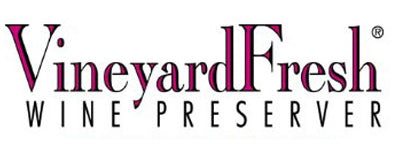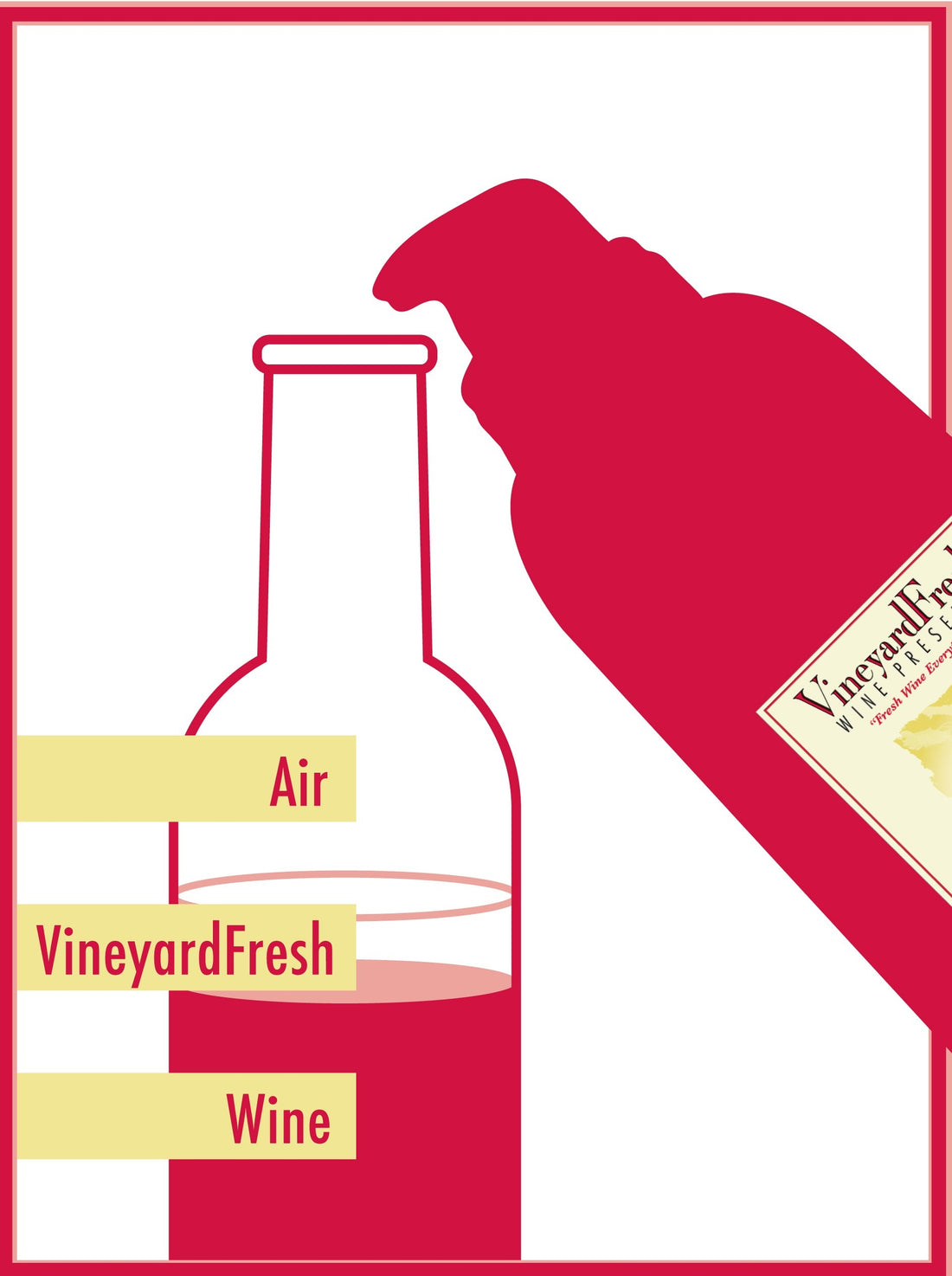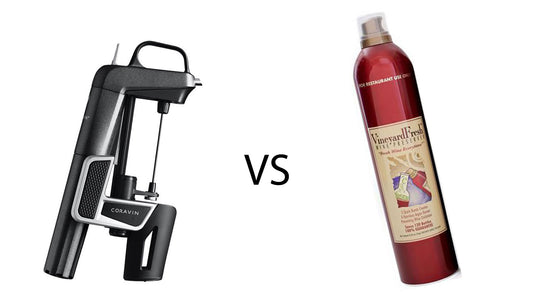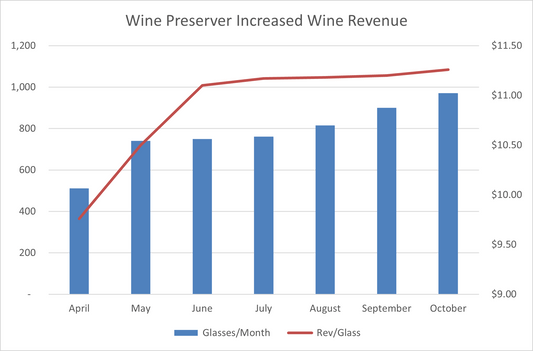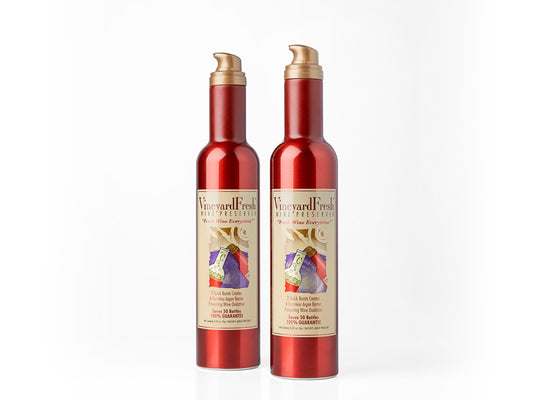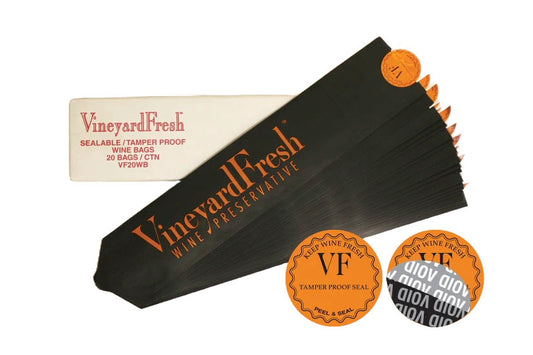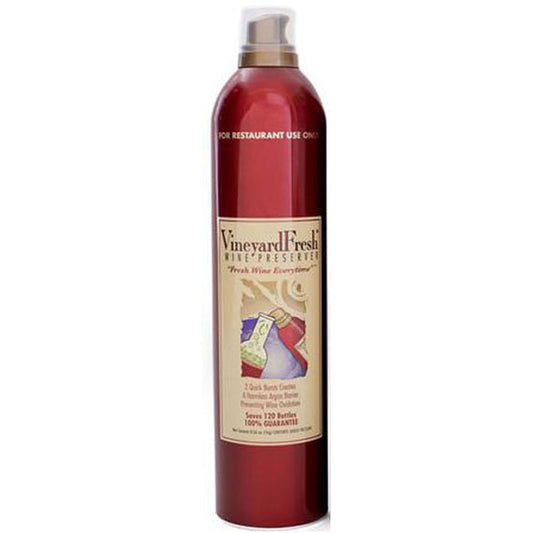Why Wine Goes Bad
When wine is exposed to oxygen, it begins to oxidize. Like an apple turning brown, or metal starting to rust - oxygen mixing with the surface of the wine begins a chemical process called oxidation, and oxidation changes the flavor of the wine.
Some oxygen interaction can be good - it allows the wine to "breath" or "open up." This is what decanting and aeration do. This is fine when you're preparing the wine to be consumed. But, oxidation - if left to continue - will overwhelm the wine and begin to degrade its taste.

Within hours, let alone overnight or over several days - the wine's flavor may become damaged to a point where the wine is no longer good. At this point, you end up dumping the wine. It's a waste of good wine and good money. It doesn't have to be this way!
How to Stop Wine from Going Bad
Oxidation is a process that can be stopped. Using VineyardFresh Wine Preserver is an easy and effective way to do it.
Simply spray 2 quick bursts of VineyardFresh into an open bottle of wine, and the 100% food grade argon spray creates a thin protective barrier between the air and the surface of the wine in the bottle, preventing the process of oxidation. VineyardFresh will naturally keep your wine fresh for weeks without affecting the taste, aroma or character of the wine.

How does VineyardFresh work? By a combination of chemistry and physics. (Ack - should have stayed awake during High School Science classes! Don't worry, it's simple)
The Chemistry and Physics of Argon Wine Preservation
The Chemistry of Argon
 VS.
VS. 
VineyardFresh is 100% Food Grade Argon, an inert gas that is heavier than oxygen and will not/can not interact with wine. Argon is non-metallic, colorless, odorless, and tasteless. Argon is widely present in small amounts in the air we breathe. As an inert gas, Argon does not chemically interact with other substances. So, it acts like a protective barrier separating the surface of the wine from the air / oxygen inside the bottle.
NOTE: Nitrogen, a preservation method used by some other wine preservation products or devices, is NOT a noble gas. Nitrogen can interact with the wine and create unintended changes to the flavor of the wine. More importantly, Nitrogen is lighter than oxygen, which creates a problem when it comes to the physics...
The Physics of Argon
With an atomic mass of 39.948 g/mol, Argon is heavier than air, which has an atomic mass of 28.97g/mol. Because argon is heavier than oxygen (and Nitrogen), it has a very useful behavior - once inside the bottle of wine, the argon will settle down on top of the surface of the wine. By settling down on the surface of the wine, the argon forms the protective layer between the wine and the atmosphere (oxygen) in the bottle.


The heavier argon gas sinks below the lighter oxygen, forming the protective blanket on top of the wine. Stopping oxidation.
Show Me The Results!
The end result of this chemistry and physics is a wine preserver that keeps your wine fresh for 2 weeks or more. VineyardFresh is a low cost, effective way to preserve the fresh taste of your open bottles of wine at home or in your restaurant.
We have conducted rigorous product testing of the effectiveness of argon wine preservation methods. By measuring the level of turbidity in tested samples of wine, the results are clear (pun intended).

Still Need Convincing?
Order a consumer can of VineyardFresh Wine Preserver and try it yourself. Or, to learn even more, check out our FAQ Page.
